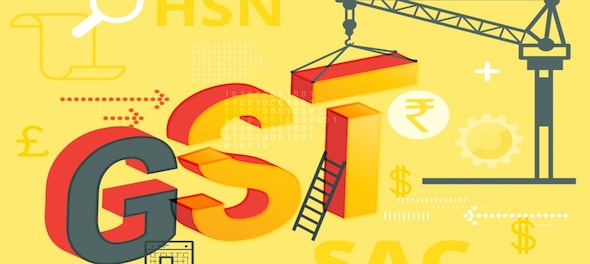
Amidst the falling economic growth and slipping tax collections accompanied by slowdown in key sectors, speculation was rife at the GST Council meeting on September 20. The stage was set with significant reduction in corporate tax rates, which had already sent the markets in celebration.
While demands for rate cuts kept coming in from FMCG and automobile sectors, this seemed unlikely due to stern opposition from the states. On the rates front, as expected, no major cuts have taken place. For small commercial passenger vehicles designed to carry 10 to 13 passengers, reduction of the compensation cess from 15 percent to 1 percent and 3 percent for petrol and diesel vehicles, respectively, is a welcome move. However, this covers a very small segment of the sector.
Tourism industry to get a boost
The most cheered move, perhaps, is the reduction in GST rates for the hotel industry, which is expected to significantly bring down the tariffs and provide a boost to the travel and tourism sector.
Also, the rationalisation of GST rates for the railways and medical devices is expected to address the duty inversion faced by these sectors, providing the much-needed relief. Further, reduction of GST rates from 18 percent to 12 percent for machine job works used in the engineering industry is expected to reduce the cost of such job works and facilitate growth in the capital goods sector.
While announcements have been made to reduce GST rates on the import of specified goods used in the defence sector, it would be pertinent to understand if the relief is granted only to the imports made by the Ministry of Defence (MoD) or to the contractors as well. The extension of such benefits to the contractors would provide respite to those supplying goods to MoD and encourage localisation.
The extension of lower rates of GST of 5 percent on specified goods supplied for oil and gas exploration and the issuance of clarification on the availability of a concessional rate of 5 percent on parts used in solar power devices cater to the long-standing demand of these sectors and reduce the tax costs and classification issues.
The withdrawal of the circulars issued earlier in respect of GST treatment of post-sale discounts and ITES services provided by entities in India for their clients will be greeted by the industry, as these had caused widespread concern and confusion. While a new clarification will be issued for the ITES sector, it remains to be seen as to how post-sale discounts are treated by the authorities in future.
In the above context, the proposal to exempt services provided by an intermediary to a supplier or recipient of goods when both are located outside the taxable territory brings in uniformity and consistency in respect of GST treatment of such services.
A fresh fillip for pharma
Significant boost has been given to the Indian pharmaceutical industry undertaking R&D for their foreign clients by providing that the place of supply in respect of such services shall be the client’s location. This would enable pharma companies to export these services without GST and to claim export benefits. Similar relief is being granted to the companies providing chip design software R&D services.
On the aviation and logistics front, changes are being made in the law, in line with the Chicago Convention, for temporary import of spare parts by foreign airlines for repair of in-transit aircraft. Clarifications are being issued in respect of taxability of Passenger Service Fee and User Development Fee levied by the airports, as this has caused confusion amongst the taxpayers. In addition, the exemption of GST on export freight by sea and air is extended by another year.
Export incentives
Several measures have been announced for export promotion. These include exempting import of silver/platinum through specified agencies and supply thereof for exports and reduction of GST rates from 3 percent to 0.25 percent for cut and polished semi-precious stones. Further, an integrated refund system for exporters has been introduced with disbursal by a single authority. Suitable clarifications are being issued in respect of the refund procedure to ensure uniformity across jurisdictions.
A proposal that may cause anxiety for taxpayers is the restriction on the availability of credits when the supplier has not furnished his outward return. While this is aimed at improving compliances by the supplier, it may be argued that it is not in the spirit of the law to penalise the recipient who has complied with the law and duly borne the tax for a supplier’s default.
Though the council may not have met all the demands of industry, it is apparent that significant steps have been taken to rationalise the rates, clear uncertainties, and incentivise exports. This should lead to reduction in tax costs and bring in uniformity and consistency in tax administration.
Manish Mishra is Partner at J Sagar Associates. With inputs from Ankur Mittal, Senior Associate at J Sagar Associates. The views are personal.
First Published: Sept 30, 2019 6:00 AM IST
Check out our in-depth Market Coverage, Business News & get real-time Stock Market Updates on CNBC-TV18. Also, Watch our channels CNBC-TV18, CNBC Awaaz and CNBC Bajar Live on-the-go!


BJP is planning to ban RSS, says Shiv Sena (UBT) chief Uddhav Thackeray
May 18, 2024 8:01 PM
Punjab Lok Sabha elections: Complete list of Congress candidates
May 18, 2024 4:08 PM
Punjab Lok Sabha elections: Check full list of AAP candidates and constituencies
May 18, 2024 12:59 PM
PM Modi, Rahul Gandhi election rallies in Delhi today: Here are the routes to avoid
May 18, 2024 11:28 AM

